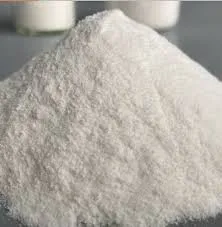
Dec . 18, 2024 21:22 Back to list
High-Performance Tile Adhesive with HPMC for Strong and Durable Bonding Solutions
The Role of HPMC in Tile Adhesive Formulations
Tile adhesives play a significant role in construction and renovation projects, providing the essential bond that secures tiles to various substrates. Among the numerous components in tile adhesive formulations, Hydroxypropyl Methylcellulose (HPMC) stands out as a vital additive. This article explores the importance of HPMC in tile adhesives, its properties, benefits, and the impact it has on the overall performance of tile installations.
Understanding HPMC
Hydroxypropyl Methylcellulose is a cellulose ether that is derived from natural cellulose, making it biodegradable and environmentally friendly. HPMC is known for its ability to retain water, improve workability, and enhance the adhesive properties of various formulations, including tile adhesives. Its unique combination of properties makes it a favored choice across the industry.
Key Properties of HPMC
1. Water Retention One of the primary functions of HPMC in tile cement is its excellent water retention capability. This property is crucial for ensuring that the adhesive maintains moisture for an extended period, allowing for effective bonding between tiles and substrates. When tiles are applied to wet adhesive, the HPMC helps to prevent premature drying, thus enhancing the bond strength.
2. Thickening Agent HPMC acts as a thickening agent in tile adhesives. By increasing the viscosity of the adhesive mixture, it helps to improve application and workability. The thicker consistency of the adhesive ensures that tiles don’t slide out of place once applied, allowing for precise positioning during installation.
3. Open Time The open time is the duration that an adhesive remains workable after application. HPMC significantly increases the open time of tile adhesives, allowing installers to work at their own pace without worrying about the adhesive hardening too quickly. This flexibility is particularly beneficial in larger installations where careful alignment is crucial.
4. Improved Adhesion HPMC enhances the bonding strength of tile adhesives. The adhesive's ability to grip tiles and substrates is critical, especially in challenging installations, such as those in high-moisture areas like bathrooms and kitchens. HPMC contributes to the formation of a robust bond that can withstand temperature variations and physical stress.
tile adhesive hpmc

5. Compatibility HPMC is compatible with various other components typically found in tile adhesives, such as cement, polymer emulsions, and other additives. This compatibility allows for the formulation of custom adhesive products that can meet specific performance requirements.
Benefits of Using HPMC in Tile Adhesives
The inclusion of HPMC in tile adhesives brings several advantages
- Durability HPMC-contributed adhesives are generally more durable, leading to longer-lasting tile installations. The combination of high adhesion strength and flexibility ensures that the tiles remain intact for many years.
- Ease of Use The thickened consistency and prolonged open time make HPMC-enhanced adhesives easier to work with, providing a smoother application process for contractors and DIY enthusiasts alike.
- Versatility Due to its water-retention properties and compatibility, HPMC can be used in various types of tile adhesives, whether for ceramic, porcelain, or natural stone tiles, making it a versatile choice for different projects.
- Reduced Cracking and Shrinkage HPMC helps mitigate issues related to cracking and shrinkage, common concerns in tile installations, by providing better control over the curing process of the adhesive.
Conclusion
The incorporation of Hydroxypropyl Methylcellulose in tile adhesive formulations exemplifies the importance of innovative materials in the construction industry. HPMC not only improves the performance of tile adhesives by enhancing their water retention, workability, and adhesion but also contributes to the overall durability of tile installations. As the construction industry continues to evolve, the utilization of such advanced materials will remain critical in ensuring effective and long-lasting tile bonding solutions. Through careful selection and formulation, the right amount of HPMC can optimize tile adhesive products to meet the demands of modern construction and renovation projects, ultimately leading to successful outcomes and satisfied customers.
-
Versatile Hpmc Uses in Different Industries
NewsJun.19,2025
-
Redispersible Powder's Role in Enhancing Durability of Construction Products
NewsJun.19,2025
-
Hydroxyethyl Cellulose Applications Driving Green Industrial Processes
NewsJun.19,2025
-
Exploring Different Redispersible Polymer Powder
NewsJun.19,2025
-
Choosing the Right Mortar Bonding Agent
NewsJun.19,2025
-
Applications and Significance of China Hpmc in Modern Industries
NewsJun.19,2025







